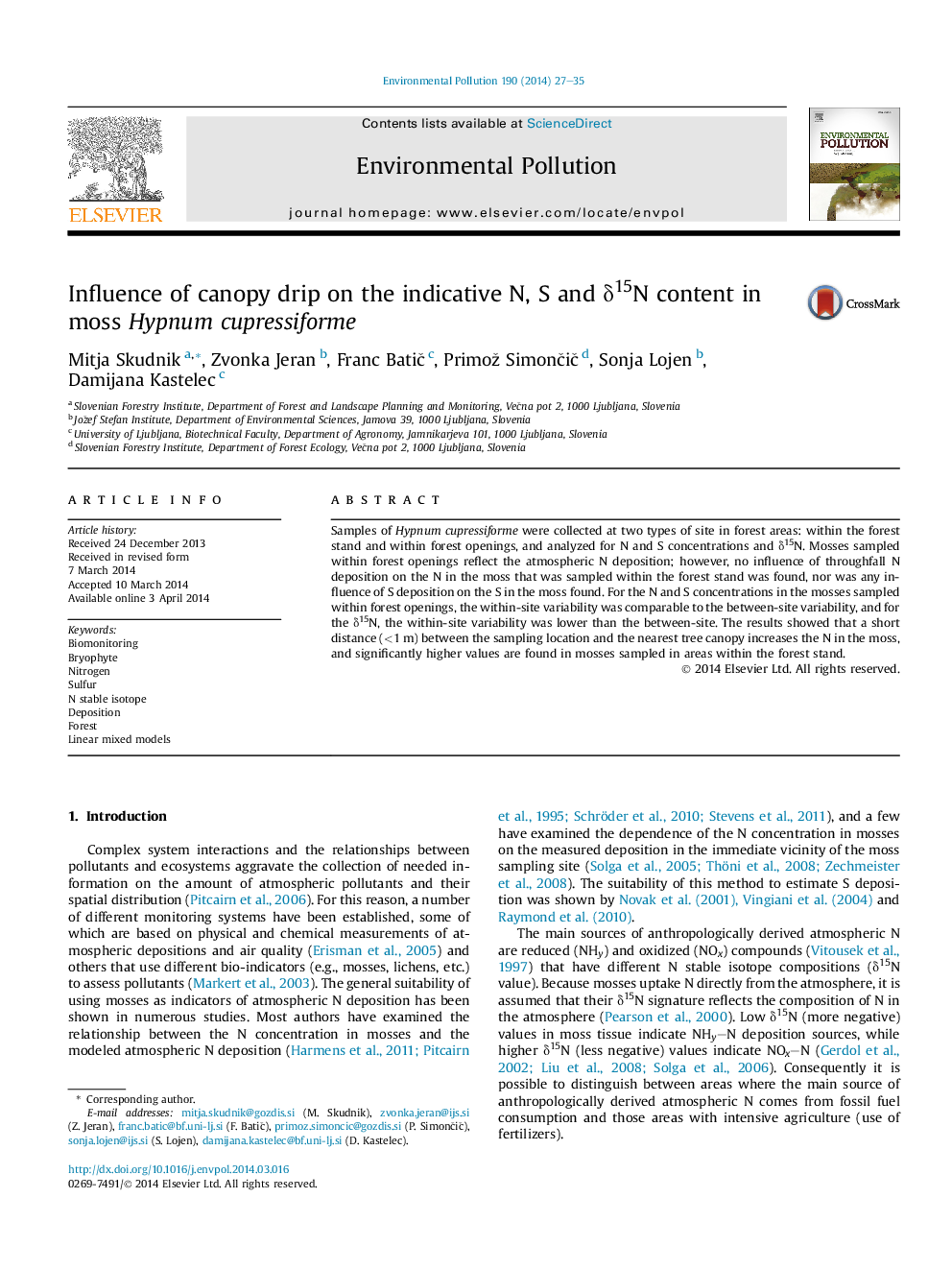| Article ID | Journal | Published Year | Pages | File Type |
|---|---|---|---|---|
| 4424309 | Environmental Pollution | 2014 | 9 Pages |
•We collected moss samples within the forest stand and within the forest openings.•We examine dependence of N, S and δ15N content in moss on atmospheric deposition.•Moss sampled within forest openings reflect the atmospheric N but not S deposition.•Higher N and S content was found in mosses sampled in areas within the forest stand.•Metadata describing the boundary condition of moss sampling location is important.
Samples of Hypnum cupressiforme were collected at two types of site in forest areas: within the forest stand and within forest openings, and analyzed for N and S concentrations and δ15N. Mosses sampled within forest openings reflect the atmospheric N deposition; however, no influence of throughfall N deposition on the N in the moss that was sampled within the forest stand was found, nor was any influence of S deposition on the S in the moss found. For the N and S concentrations in the mosses sampled within forest openings, the within-site variability was comparable to the between-site variability, and for the δ15N, the within-site variability was lower than the between-site. The results showed that a short distance (<1 m) between the sampling location and the nearest tree canopy increases the N in the moss, and significantly higher values are found in mosses sampled in areas within the forest stand.
Graphical abstractFigure optionsDownload full-size imageDownload as PowerPoint slide
